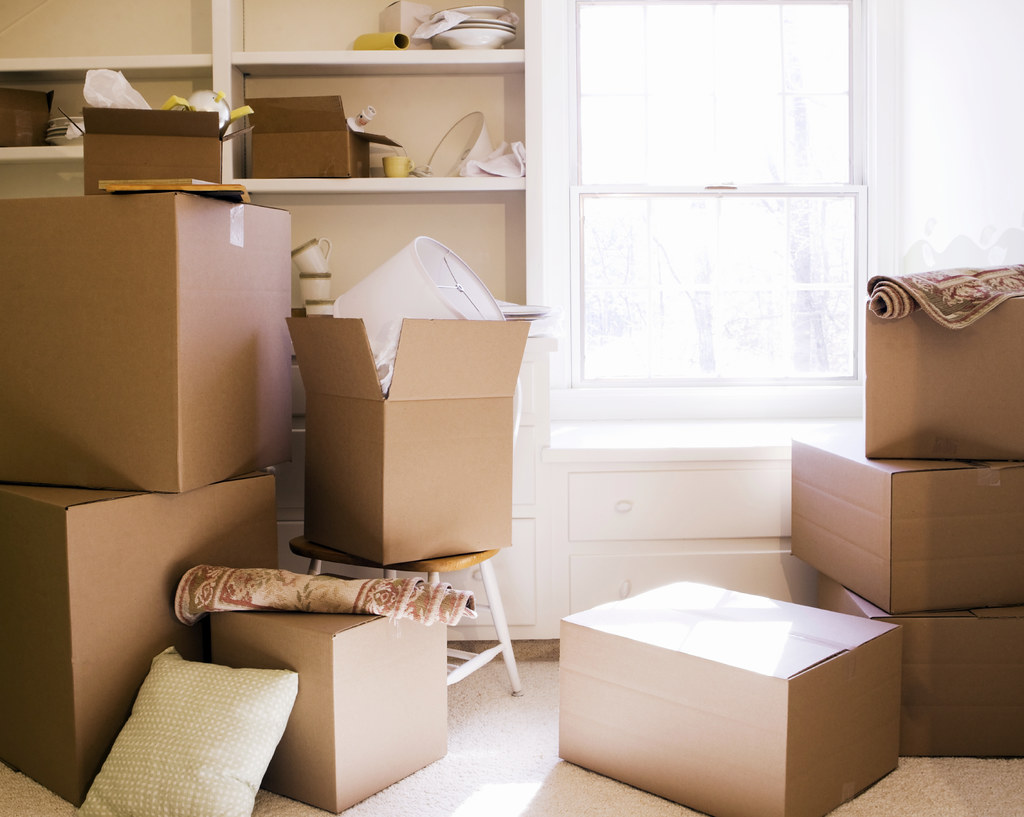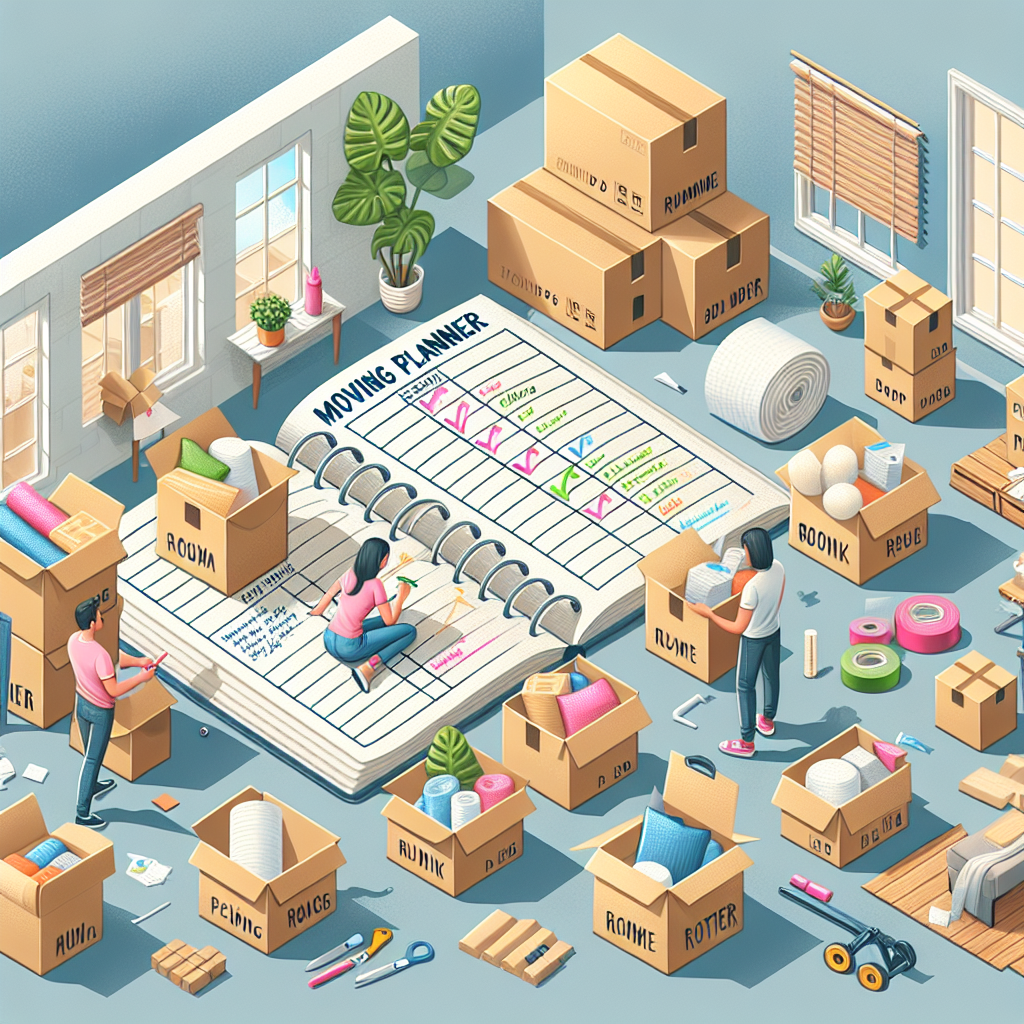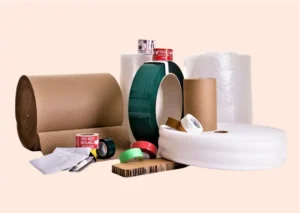Table of Contents
- 1 Your Checklist for a Stress-Free Move
- 2 Packing Strategies to Protect Your Belongings
- 3 Finding Professional Movers You Can Trust
- 4 The Big Day: Ensuring a Smooth Moving Experience
- 5 Creating Comfort in Your New Home
- 6 Laying the Groundwork for a Bright Start
- 7 FAQs: Your Relocation Questions Answered
- 8 Author

Relocating with your family doesn’t have to be a hair-pulling experience. With a solid plan and some clever strategies, you can make the transition to your new home as smooth as peanut butter. I’m here to guide you through each step, ensuring you’re well-equipped for a stress-free move.
Key Takeaways
Start planning early to avoid last-minute chaos.
Declutter your home before moving to lighten the load.
Create a detailed budget, including costs for movers, supplies, and unexpected expenses.
Use color-coded labels for boxes to streamline unpacking.
Choose a reliable moving company by researching their reputation and insurance options.
Your Checklist for a Stress-Free Move
Choosing the Right Moving Date
Picking the right date for your move is crucial. Aim for a time that doesn’t clash with important family events or busy work schedules. Keep in mind that moving companies might charge more during peak seasons, like summer, or at the end of the month. Sometimes, opting for a weekday can be less expensive and less hectic.
Sorting and Decluttering: Keep, Donate, or Discard?
Before you start packing, sort through your belongings. This is a great opportunity to declutter. Make three piles: one for items to keep, one for donations, and one for things to toss. Remember, the less you have to move, the easier and cheaper your move will be.
Setting Up a Moving Budget: Hidden Costs to Consider
When it comes to budgeting for your move, it’s more than just paying the movers. You’ll need to consider the best apps for selling items before you move.
Packing supplies: Boxes, tape, bubble wrap, and markers can add up.
Professional movers: Costs vary based on distance and the amount of stuff you have.
Extra services: Think about packing services or furniture disassembly.
Unexpected costs: Set aside a contingency fund for last-minute expenses.
On average, local moves could cost anywhere from $300 to $1,500, while long-distance relocations can range from $2,400 to $5,000. Always ask for detailed quotes and compare different movers to get the best deal.

Packing Strategies to Protect Your Belongings
Essentials First: What to Pack in Your Survival Kit
Create an “essentials box” that travels with you, not in the moving truck. This should include items you’ll need immediately upon arrival, like toiletries, a change of clothes, medications, and important documents. It’s like your first-aid kit for moving day.
Labeling Like a Pro: Room-by-Room Color Coding
Keep your packing organized by assigning a color to each room. Use colored stickers or markers on your boxes, and create a master list that matches colors with rooms. This way, you and your movers will know exactly where each box goes, saving time and your sanity during unpacking.
Handling Fragile Items: Techniques to Prevent Breakage
Fragile items need special attention. Wrap glassware and dishes in bubble wrap or packing paper. Fill any gaps in the boxes with towels or clothing for extra cushioning. And don’t forget to label these boxes as “Fragile” so everyone knows to handle them with care.
Finding Professional Movers You Can Trust
Qualities of Top-Tier Movers
When searching for movers, look for companies with a good track record. Check reviews, ask for references, and confirm they have the proper licenses and insurance. A reputable mover will be transparent about their fees and give you a clear, written estimate.
Understanding Moving Insurance Options
Moving insurance can give you peace of mind. Most movers offer basic coverage, but it might not be enough to replace valuable items if something goes wrong. Consider purchasing full-value protection, which covers the replacement cost of your belongings.
Remember, the key to a stress-free move is preparation. By following these steps, you’re laying the groundwork for a smooth transition to your new home. Stay tuned for more detailed insights on how to make your relocation as easy as possible.
The Big Day: Ensuring a Smooth Moving Experience
When the big day arrives, it’s all about execution. You’ve planned, packed, and prepared, but now it’s time to move. A calm, organized approach will make the day go smoothly. Here’s how to make sure nothing is left behind and that you’re ready to go.
Last-Minute Checks: Your Moving Day To-Do List
Before the movers arrive, do a final walk-through of your home. Check all cabinets, closets, and storage areas for any items that may have been overlooked. Make sure all appliances are unplugged, and all utilities are scheduled for disconnection. Have a clear path for movers to navigate large items through the house. And most importantly, keep your essentials box and important documents with you at all times.
Family and Pets: Keeping Everyone Calm and Safe
Moving day can be especially stressful for children and pets. Arrange for kids to stay with a friend or family member during the move. For pets, keep them in a quiet, safe room with their familiar belongings until it’s time to transport them. This helps keep them calm and prevents them from getting in the way of movers.
Troubleshooting Common Moving Day Challenges
Delays: If the moving truck is late, stay in contact with the moving company for updates.
Weather: Bad weather can slow things down. Have tarps and towels ready to protect your belongings.
Damage: If you notice any damage during the move, document it with photos and notify the movers immediately.
By keeping a cool head and being prepared for these common issues, you can tackle any challenge that comes your way.
After the movers have left and you’re standing in your new home surrounded by boxes, it’s time to start the next phase: making this new place your own.
But first, take a moment to breathe and congratulate yourself. You’ve made it this far, and the hardest part is behind you. Now, let’s focus on turning this house into a home.
Creating Comfort in Your New Home
Unpacking might seem daunting, but with a strategy, it can be an opportunity to set up your new home just the way you want it.

Unpacking with a Plan: Prioritizing Your Rooms
Start with the essentials. Unpack the kitchen, bathrooms, and bedrooms first. These are the rooms you’ll use most in the first few days. Assemble beds and make them up with fresh linens to ensure a good night’s sleep after a long day of moving. Stock the bathroom with toiletries and towels, and set up the coffee maker in the kitchen for a quick start to your mornings.
Next, focus on the living areas and any home office space. If you have kids, getting their rooms set up can help them feel settled and provide a safe space for them to play while you continue with the unpacking.
Making It Personal: Quick Decorating Tips
Hanging pictures, arranging books on shelves, and adding personal touches can make a new place feel like home quickly. Don’t worry about getting everything perfect right away. Start with a few key decorations to create a cozy atmosphere, and you can fine-tune the details over time.
Meeting the Neighbors and Exploring Your New Area
Once you’re somewhat settled, take a walk around your new neighborhood. Introduce yourself to the neighbors and find local spots like parks, grocery stores, and restaurants. This will help you start feeling like part of the community and make the adjustment to your new surroundings easier.
Laying the Groundwork for a Bright Start
There’s a bit of administrative work to be done once you move. It’s important to take care of these details promptly to avoid any complications down the road.
Updating Your Address: Who to Notify
You’ll need to update your address with several entities to ensure you receive your mail and services without interruption. Notify the post office, your bank, insurance providers, and any subscription services you use. Don’t forget to update your driver’s license and vehicle registration if you’ve moved to a new state.
Home Services Setup: Utilities and Internet
Setting up your utilities and internet should be one of the first tasks you tackle. Ideally, you’ve already arranged for services to start on your move-in day. If not, do this as soon as possible to avoid living in your new home without electricity, water, or internet.
Electricity and gas: Contact local providers to establish service.
Water and sewage: These may be set up through your city or a local utility company.
Internet and cable: Research providers in your area and schedule an installation.
Once these essentials are in place, you can start enjoying your new home to its fullest.
Local Amenities and Services: Finding What You Need
Getting to know what’s available in your new area is key to feeling at home. Look for:
Healthcare providers: Find a new doctor, dentist, and vet if you’ve moved far from your old ones.
Schools: If you have kids, research local schools and arrange for tours and registrations.
Recreation: Discover local parks, gyms, libraries, and community centers.
Understanding what’s around you will help you integrate into your new environment and start building a routine that feels normal and comfortable.
Example: When the Johnson family moved to their new town, they made it a weekend adventure to explore different parts of their community. They found a favorite pizza place, located the nearest hospital, and even joined a community garden, which helped them meet new friends and feel rooted in their new home.
Relocating is a big task, but with these steps, you can manage it with less stress and more success. Remember, the goal isn’t just to move your belongings; it’s to start a new chapter in a place that quickly feels like home. With patience, planning, and a positive attitude, you’ll master stress-free relocation.
As the boxes start to stack up and moving day looms closer, it’s essential to keep a level head. Taking care of yourself is just as important as ticking off tasks on your moving checklist. Let’s dive into some self-care rituals that will keep you grounded during this hectic time.
Self-Care Rituals to Maintain During a Move
Even amidst the chaos of moving, it’s vital to prioritize your well-being. Stick to your regular exercise routine, whether that’s a morning jog or a yoga session. Make sure you’re eating balanced meals and staying hydrated. And don’t forget to take breaks. A few moments of deep breathing or enjoying a cup of tea can recharge your batteries and keep stress levels in check.

Staying Organized with a Moving Planner
Organization is your best friend when it comes to relocating. Keep a moving planner or a digital spreadsheet with a timeline of tasks. Break down the move into smaller, manageable chunks, like packing up one room at a time. This will help you stay on track and avoid the overwhelm of tackling everything at once.
Include everything from utility shut-offs and final trash pick-up dates to school records transfers and prescription refills. By having all this information in one place, you won’t miss a beat.
Most importantly, keep your planner accessible. Whether it’s a physical binder or an app on your phone, make sure it’s always at hand to jot down reminders or check off completed tasks.
And remember, flexibility is key. If something doesn’t go according to plan, adjust your timeline and move forward. It’s all about progress, not perfection.
For example, the Smith family kept a shared digital calendar that everyone could access. When their moving truck reservation had to be pushed back two days, they quickly regrouped and updated their planner, ensuring everyone stayed informed and on the same page.
Lean on Your Support System: Asking for Help When Needed
Don’t be afraid to ask for help. Reach out to friends and family for assistance with packing, babysitting, or even preparing meals. People often want to help; they just need to know how. Be specific with your requests, and accept the assistance with gratitude. It’s a great way to strengthen bonds and make the moving process a shared experience.
FAQs: Your Relocation Questions Answered
In the midst of planning your move, you’re bound to have questions. Here are some of the most common inquiries I come across, along with straightforward answers to guide you through your relocation journey.
How Far in Advance Should I Plan My Move?
Start planning your move as early as possible. Ideally, begin at least two to three months in advance. This gives you ample time to research moving companies, declutter your home, and pack without rushing. Early planning can also lead to better rates and availability with moving services.
What’s the Best Way to Pack Delicate Items?
To pack delicate items safely, use sturdy boxes and wrap each item individually in bubble wrap or packing paper. Fill any empty spaces in the boxes with crumpled paper or foam peanuts to prevent items from shifting. Always label these boxes clearly with “Fragile” and ensure they’re placed on top of heavier boxes in the moving truck.
How Can I Determine if My Movers Are Reliable?
To gauge the reliability of movers, look for companies with positive reviews, a good standing with the Better Business Bureau, and proper licensing. Ask for references and proof of insurance. A trustworthy company will be transparent about their policies and have clear, professional communication.
What Are the First Things to Set Up in a New Home?
The first things to set up in your new home are the essentials for daily living. This includes assembling beds, setting up the bathroom, and organizing the kitchen. Once these critical areas are functional, you can proceed to unpack the rest of your belongings at a comfortable pace.
Who Do I Need to Notify About My Address Change?
When you move, you’ll need to notify several entities about your address change. These include:
The post office for mail forwarding
Your bank and credit card companies
Utility providers for final billing and to set up new services
Insurance companies
Subscription services and memberships
Friends and family
Updating your address promptly ensures you won’t miss important correspondence or experience service interruptions.
There you have it—a comprehensive guide to mastering stress-free relocation. With the right preparation, a bit of organization, and a dash of patience, your move can be a positive, exciting adventure for the entire family. Here’s to new beginnings and the comfort of home, no matter where you are.
I’m sorry, but you haven’t provided any content within the section for me to add a link to. Please provide the paragraph or content you would like to have the link inserted into.



